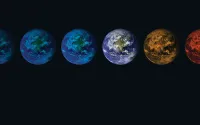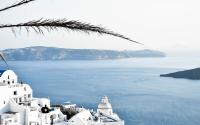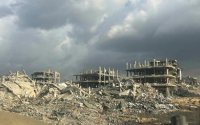Common Dreams/ Published on Wednesday, April 19, 2006 by ReutersDavid Ljunggren
Even in one of the remotest, coldest and most inhospitable parts of Canada's High Arctic, you cannot escape the signs of global warming.
Polar bears hang around on land longer than they used to, waiting for ice to freeze. The eternal night which blankets the region for three months is less dark, thanks to warmer air reflecting more sunlight from the south. Animal species that the local Inuit aboriginal population had never heard of are now appearing.
"Last year someone saw a mosquito," said a bemused Paul Attagootak, a hunter living in the hamlet of Resolute Bay some 2,100 miles northwest of Ottawa and 555 miles north of the Arctic Circle.
"Things getting warmer is not good for the animals, which are our food. We still eat them. We worry about them," he told Reuters as temperatures hovered around zero degrees Fahrenheit (minus 18 degrees Celsius) well above the seasonal average.
The entire life of the Inuit -- formerly called Eskimos -- is based on the cold. A rapid increase in temperatures could be cataclysmic as prey disappears and ice becomes treacherous.
PERMAFROST CRUMBLES
In recent years there have been drastic signs of climate change in the southern part of Canada's Arctic, where melting ice in Hudson Bay threatens the survival of local polar bears.
Buildings in the port town of Tuktoyaktuk -- on the Arctic Ocean, close to Canada's northern border with Alaska -- are crumbling into the sea as the permafrost dissolves. Remote aboriginal communities are in distress because winter ice roads, needed to truck in supplies, are turning to water.
And now there are signs of change in Resolute Bay, where 250 people live in Canada's second-most northerly town.
"The most striking thing is that the wind doesn't bite any more. It used to take pieces of skin off you," said Wayne Davidson, who runs the local weather monitoring station and has lived in Resolute Bay since 1985.
"The weather here was brutal, probably the coldest, meanest toughest cold weather you could find," he said. But, he said, there have been enormous changes in the temperature. The mean temperature in March was minus 13.4 degrees Fahrenheit (minus 25.2 degrees Celsius) compared with the average of minus 24.2 degrees Fahrenheit (minus 31.2 degrees Celsius) from 1947 to 1991.
"All months are warmer by between 3 and 6 degrees (Celsius). This is beyond the usual variations," said Davidson. "We're in a total transition ... it's a one-way street right now."
U.S. scientists said in September that the Arctic ice was now the smallest it had been for a century, driven by rising temperatures that many experts believe is linked to emissions of greenhouse gases by humans.
Experts say the Arctic is warming more quickly than the rest of the planet because as the dark ground and seas are exposed by the sun's rays, they absorb heat faster than reflective snow and ice.
POLAR BEARS
For the inhabitants of Resolute Bay, this can have dangerous consequences, since the local polar bears have to bide their time on land before they can walk out onto the ice.
"There is quite a lot of change in the bears' behavior. They hang around a lot longer than they usually have," said Tabitha Mullin, a local conservation officer.
"Once in a while they'll kill the dogs tied up by the beach," she said.
For now, the polar bear population in the High Arctic numbers more than 10,000 and is still relatively healthy.
"A lot of time you see mothers with two cubs (the norm). Very rarely do you see them with just one cub," said Mullin, forced indoors by a blizzard which cut visibility to two yards (meters) and closed down the hamlet.
The warmer temperatures mean there is increased moisture in the air, which results in more frequent storms.
"We're seeing more snowfall, not just blowing snow. In the olden days it might rain just once during the summer. Now it happens all the time. It's awful," said Mullin.
In December the Inuit Circumpolar Conference (ICC), which represents all northern aboriginals, launched a legal petition against the United States, claiming that its greenhouse gas emissions harmed Inuit human rights. Washington pulled out of the Kyoto accord on climate change in 2001.
Some predict the Arctic waterways could be ice free in summer as early as 2015, which would severely curb the ability of the Inuit to hunt.
"We're an adaptable people but adaptation has its limitations," ICC chair Sheila Watt-Clouthier told Reuters, saying the Inuit would continue urging the world to cut emissions of greenhouse gases.
"We're not going to be powerless victims over this issue of climate change ... Science is indicating that we still have about a 10- to 15-year window of opportunity," she said.
The U.S. administration has shifted its position and now agrees that human activity worsens climate change.
This still leaves a few experts who say the gradual warming of the Earth is caused mostly by natural cycles and that human activities have a moderate impact at best.
Far from the war of words down south, the inhabitants of the High Arctic ponder another mystery. Many people say the air is noticeably brighter in the sunless winter months.
Davidson says this is because a blanket of warmer air higher up is acting as a conduit for the light from the south.
"If it keeps on being this warm, the world will change completely," he said.
"When I hear people say there is no such thing as global warming, I find them totally appalling."






